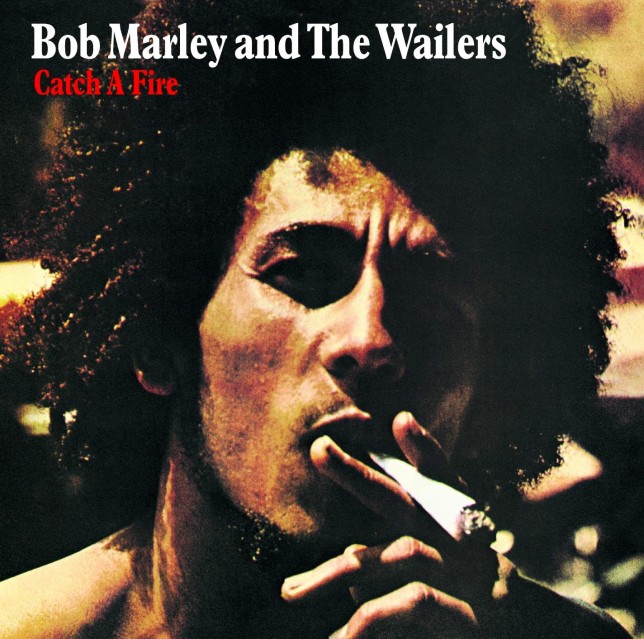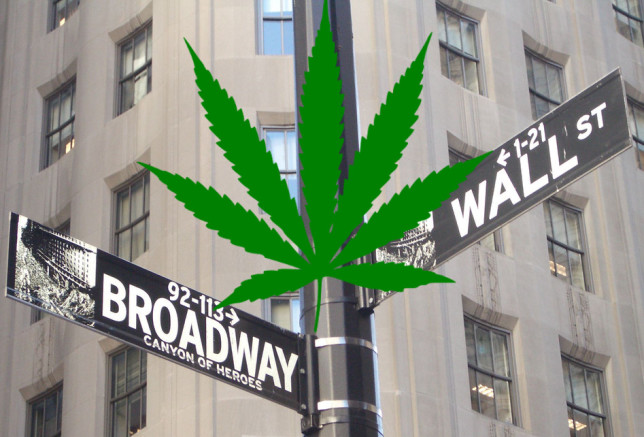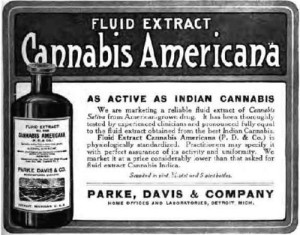Marijuana legalization is culture war. From cultural conservatives fearful of losing the war on drugs to counter culture leftists who equally fear their precious herb will be corrupted by the poisoned chalice of capitalism and big business. Marijuana is representative of long standing culture wars and the prospect of legalization has implications far beyond arrest records and sales revenues.
In New York City we can observe these cultural forces at work. New York is home to America’s financial industry which is caught in uncertainty between opportunity and the law. Many investors are eager to embrace the new legal cannabis markets, but their hands are largely tied while federal marijuana prohibition remains in effect. New York City is also a maritime port full of music with an old and rich marijuana history.
Non-psychoactive cannabis hemp had been grown commercially for fiber and seed in Europe and America for centuries, but smoking cannabis flowers to get high was largely unknown to white culture until the 20th century when the practice became associated with criminals and the racial underclasses. The practice of smoking marijuana had been brought by African slaves to the New World where it took hold throughout the Caribbean and Latin America. In the early 1900’s marijuana was being brought into America by Mexicans crossing the southern border and through the maritime trade in port cities, particularly in New Orleans and New York where it was popular with black jazz musicians and their fans.
Drug prohibition began a century ago and was rooted in a genuine moral concern to limit the damages resulting from the abuse of addictive drugs such as opiates and cocaine. Marijuana was commonly, albeit mistakenly, identified as a dangerous narcotic and banned along with the other drugs. But the fact that prohibitionists routinely ignored documented evidence that marijuana is not dangerous or a threat to public health and safety since it does not cause fatal overdoses nor incite violence demonstrates that they were primarily concerned with enforcing the cultural values of the dominant white social group while also enjoying the power and authority of law enforcement.
Though individual states had begun banning marijuana twenty years earlier, federal prohibition began in 1937 under the guise of a $1 per ounce tax act authored by Harry Anslinger, director of the Federal Bureau of Narcotics. Anslinger argued passionately that marijuana was extremely dangerous, causing insanity and crime, and not a legitimate medicine despite the existing pharmaceutical cannabis trade. Anslinger was helped by the New Deal Congress who saw no problem that could not be solved through liberal application of big government bureaucracy and was happy to give Anslinger whatever he asked for.
Not everyone was convinced of the supposed dangers of marijuana and in 1944 New York City Mayor Fiorella La Guardia released the results of a comprehensive five year study on marijuana that found it to be effectively harmless, greatly angering Anslinger who managed to discredit the report.
Through the 1940’s the feds had trouble finding any major interstate marijuana traffickers to arrest, because there weren’t any. But Anslinger knew where to find some pot, he dispatched his agents to spy on prominent jazz musicians such as Louis Armstrong, Dizzy Gillespie, Cab Calloway and many more, dreaming of a coordinated nationwide bust of the immoral musicians (that never happened).
Bob Dylan introduced marijuana to the Beatles in a New York City hotel room in 1964, not only shaping rock and roll musical history, but also helping to spark the counter culture revolution animated by opposition to the Vietnam War, civil rights, feminism, and the environment. Marijuana quickly became symbolic of the movement and popular with white middle class youth which was shocking to their parent’s generation who did not approve.
In 1972, conservative President Richard Nixon convened an august commission to study the dangers presented by marijuana use and to justify prohibition. When the Shafer Commission reported back that marijuana was in fact not dangerous and should be decriminalized, President Nixon was outraged and threw the report in the garbage, declaring “drug abuse public enemy number one” and that he would “work unceasingly to halt the erosion of moral fiber in American life.”
Drug prohibition turned out to be a very useful policy tool to help check progressive social movements. Nixon was eager to halt the growing influence of white anti-war activists and black civil rights leaders. Drug prohibition provided authorities with the legal right to invade the private lives of citizens and arrest many of them. The black community was disproportionality targeted and many activist groups were shut down with drug busts often the pretext for arresting leaders.
President Reagan doubled down in the war on drugs during the 1980’s during a period of resurgent conservative social values and President Clinton continued the trend in the 1990’s until America (land of the free, home of the brave) earned the ignoble distinction of being the country that imprisons more of its citizens than any other. Despite the drug war’s ever increasing toll marijuana use continued and its influence on culture and music grew.
Rap and hip hop music heavily fueled by marijuana emerged from the Bronx borough of New York City in the late seventies and eighties to become one of the most popular commercial musical forms today. Black hip hop artists like Public Enemy and N.W.A. were often hostile to the white cultural establishment, but by finding success in the marketplace they elbowed their way into public acceptance and created a new generation of wealthy black business moguls.
Reggae icon Bob Marley was inspired by his early visits to New York City to write Reggae on Broadway a lesser known classic that predates his famous albums. Bob Marley in 1971 was a perfect representative of the undesirable underclass; a black, impoverished descendent of slaves from the West Indies, a dreadlocked Rastafarian puffing a spliff in Times Square, a criminal. Today Bob Marley is celebrated in the marketplace, his music is worth billions, his name graces a complete line of marijuana products and his image displayed on giant electronic billboards, big joint on his lips. The acceptance of Bob Marley and his ganja smoking culture is exactly what Harry Anslinger and the culture war prohibitionists have always feared.

***
One of the great challenges in the emerging cannabis industry is that due to a century of prohibition very little scientific and academic work has been done on the cannabis plant and the legal frameworks for intellectual property protection are likewise very immature. As people rush into the nascent legal cannabis industry there are many competing agendas at work.
At the time prohibition went into effect the scientific community did not know how cannabis interacted with the human body to produce its psychoactive effects, nor have a clear understanding of its use as medicine despite thousands of years of pedigree.
One place where proper scientific research on cannabis has been allowed is in the holy land, Israel. In the 1960’s Israel began allowing researchers to study cannabis to determine the active compounds and how they worked. Professor Raphael Mechoulam and his team in Jerusalem were the first to isolate and identify Δ9-tetrahydrocannabinol, better known as THC, the active psychoactive component in marijuana. From there they discovered the existence of the endocannabinoid system, the largest receptor system in human body as well as endogenous cannabinoids the body itself produces. Prof. Mechoulam is considered the grandfather of medical marijuana research and he inspired a generation of researchers around the world who have studied other components of cannabis such as CBD (cannabidiol) and the broad roles played by the endocannabinoid system in human physiology.
Researchers have documented many valuable medical applications for cannabis that were first described in ancient medical texts. Some of the most promising medical uses for cannabis have been in treatment of epilepsy, cancer, HIV/AIDs, Parkinson’s, Crohn’s disease, nausea, anxiety, and more. Because of international prohibition much of this work has been kept relatively quiet and only a few pharmaceutical companies have attempted to develop cannabis based medicines that pass through accredited clinical trials.
One of the leading firms developing cannabis medicines is publicly traded GW Pharma from the UK. GW Pharma is currently marketing Sativex™ in 15 countries for treatment of spasticity due to multiple sclerosis and are in the process of getting approval for Epidiolex™ for treatment of pediatric epilepsy. GW Pharma is actively building a portfolio of patents directed towards cannabis plants, extracts, extraction technologies, pharmaceutical formulations, drug delivery and the therapeutic uses of cannabinoids, plant variety rights, and more. GW Pharma has hundreds of patent applications in the USA and worldwide with dozens already issued. GW Pharma is well respected and exemplifies the opportunity for specialty drugs to be created from cannabis even as it crystalizes the fears of many in the marijuana community afraid of being overrun by corporations.
GW Pharma got started in 1998 when they purchased the seed bank developed two American marijuana breeders working in Amsterdam. This was viewed by some as evidence that the work of anonymous, outlaw breeders was soon to be usurped by predatory corporations who could dedicate multi-million dollar research programs to locking up cannabis within their private patent portfolios while leaving the general public who enjoy marijuana for recreation still subject to arrest and persecution. These views are enhanced when people see that the US government holds patent #6,630,507, issued to the Department of Health and Human Services in 2003 which covers certain cannabinoid compounds found in marijuana that have antioxidant properties and may be useful in medical treatments, even as the Drug Enforcement Administration hypocritically claims that there is no accepted medical use for cannabis.
Corporations have been in the breeding game in the past, around 1900 US pharmaceutical manufacturers Eli Lilly and Parke-Davis collaborated to develop a new strain called Cannabis Americana using seeds from India in order to create a reliable source for the domestic pharmaceutical market, though it is not clear if they sought patents for it.
There is competition emerging between pharmaceutical cannabis and the recreational market and not everyone is behaving ethically. A disturbing recent incident involves Insys Therapeutics, a biotech firm actively developing cannabis medicines who contributed $500,000 to fight a 2016 marijuana legalization ballot measure in its home state of Arizona. Insys stated in its SEC filings that “legalization of marijuana… [would likely reduce our] ability to generate revenue and our business prospects would be materially affected.” Insys has been under multiple investigations and had executives indicted for illegally marketing its primary product, a highly addictive form of the opioid Fentanyl.
Cannabis is a remarkably diverse plant with thousands of unique strains including landrace strains indigenous to different parts of the world such as Hindu Kush from Afghanistan and Panama Red from Central America as well as non-psychoactive strains of fiber hemp. From the landraces underground marijuana breeders created an endless variety of hybrids seeking to produce the most potent and charismatic strains possible.
The Open Cannabis Project is a community led organization building a database of all existing cannabis varieties by using genetic sequencing technology of DNA to provide definitive unique identification. The goal of the Open Cannabis Project is to document the prior art and existence of as many varieties as possible to ensure these varieties remain in the public domain and cannot be restricted through patents or licenses. It is entirely possible that unethical actors could attempt to patent strains that do not belong to them and it is also possible that the courts could enable those unethical actors through rulings that fail to properly account for the rich history of cannabis cultivation. There is no existing legally recognized database of cannabis varieties and no legal precedent for demonstrating the prior existence of any particular strains.
Public domain is a well-established legal concept covering ownership and non-ownership of intellectual property, but the business rationale for directly investing in public domain properties comes from the computer world of open-source software. Open source software is a rich ecosystem of computer programs whose source code is freely available and not sold or subject to restrictive licenses. While it may seem counter intuitive that giving away software for free would be a good business practice, open source has proven itself to be a robust method for producing the highest quality software. Far from being some sort of Marxist plot, major corporations such as IBM have invested billions in open source software development and have recognized the market value in not creating restrictive licensing covenants because it reduces costs and enables innovation.
The most famous open source software is the Linux operating system which is the dominant server platform powering much of the internet as well as the kernel for Google’s Android smartphone OS. While Linux is proven and robust, not all open source software is quality and there is room in the market for developers to sell their software under licenses. The implicit caveat of licensed software is that it is superior to the free, open source competition. In this way, licensed and open source software compete and complement one another in a Yin-Yang formation creating a diverse and free market. One could argue that open source epitomizes the free market by enabling unrestrained innovation and supporting community based economic resiliency.
It is perfectly natural for individuals and firms who invest money and effort into developing unique new products and medicines to seek patent and trademark protection for their intellectual property so that imitators don’t rip them off. This is equally true for inventive marijuana breeders in the recreational space as it is for pharmaceutical firms. The standard for seeking patents is that the new invention offers unique characteristics not already existing in nature or the marketplace. Since cannabis is such a varied and adaptable plant there is lots of room for new and unique strains to be developed.
The race is on to gain patents and intellectual property rights for cannabis strains and products. The landrace strains should form the basis for a robust public domain portfolio of cannabis breeds that can support many businesses, but there is also a role for patenting new and novel strains of cannabis, particularly those with specific medicinal qualities. There are underground marijuana breeders seeking to bring their work into the light, biotech firms striving to create the next generation of pharmaceuticals, and also people trying to protect the integrity of indigenous landrace strains. There is room for everyone but there is also sure to be conflict over competing claims and agendas.
***
Cannabis is among the most versatile and adaptable of all crops, it thrives globally and offers three unique commodity resources; long and strong hemp fibers from the stalks, highly nutritious seeds and seed oils, and the flowers used as psychoactive drugs for recreation, religion, and medicine. None of these commodities have benefited from the full application of modern science and technology and each of these resources can be major cash crops. Cannabis is poised to be a trillion dollar industry globally if the shackles can finally be removed, but the legal future of cannabis remains to be determined.
President Obama in the 2010’s has taken a hands off approach, offering minimal federal interference to state based efforts to legalize both medical and recreational marijuana. But the culture wars will continue to play out in unpredictable ways and there is no assurance that future administrations will follow Obama’s lead. Many prohibitionists were upset with President Obama’s policy choices and there is a constituency that would like to see the federal government take a stronger hand in confronting cannabis legalization efforts directly.
Prohibitionists at the federal level have many tools available to slow down state legalization efforts. A new administration hostile to legal marijuana could crack down by taking legal challenges to state agencies, imposing aggressive tax policies, and continuing to harass cannabis businesses by pressuring banks, lawyers, insurance providers, landlords or any other service providers businesses require.
A cynical approach would allow prohibitionists to maintain the veneer of moral authority by allowing medical marijuana for sick patients but only providing production licenses to politically connected insiders while enforcing prohibition on recreational marijuana. An additional risk is that the courts could rule that favored parties are allowed to patent cannabis strains that rightfully belong in the public domain.
Investors are eying all sectors in the emerging cannabis industry but there are no guarantees on legalization and the prohibitionists could hold on for a long time. On the other hand, a financial crisis could tip the scales decisively. We are currently in an environment where global government debts have reached unprecedented, stratospheric levels. Government bond markets in the US, Europe, and Japan are bound to zero and negative interest rates, a historical anomaly that enables debts to be piled exponentially higher while ensuring that debt service will be unpayable if interest rates move up by even a few points. International government bond markets look increasingly like the mother of all financial bubbles and a crash threatens to bring down the entire Bretton Woods financial architecture and the US dollar’s status as the world reserve currency.
A bond market crash could bankrupt the industrialized nations, break up the European Union, and force the United States to withdraw its overseas military empire for lack of funds to pay for it. In this scenario, having a trillion dollar global cannabis industry to pull out of a hat like a magic rabbit would quickly become attractive to nations scrambling for new sources of revenue. A bond market crash could realistically mark the end of 500 years of European colonialism and white cultural dominance while leaving the marijuana leaf to become a symbol for a new chapter in human history.
***
Reggae on Broadway was not a hit single in 1972, but Bob Marley was known for his prophetic visions, perhaps he was peering through the clouds of ganja smoke towards a future that had not yet come to pass, but may still.

